
I’ve only ever traveled once in an RV, but I wish I had experienced it more often! There’s something about being on the open road, exploring smaller towns off the beaten path, and being able to nap while still traveling.
My parents borrowed their friends’ RV and took us on a two-week adventure all over the western United States. One of my favorite parts was pulling off the Interstate in Wyoming to light off fireworks for my little brother’s birthday (because fireworks are legal in Wyoming).
I know you probably aren’t looking for an RV to experience similar shenanigans as I did. So let’s get to it! Class C RVs are built on a cabin chassis and usually have an overhead sleeping cabin to allow for more living space.
Class C RV’s are a great choice for families who’d like room and space to move around, but don’t want the hassle of a Class A size and length. Essentially, Class C is an ideal RV choice because it is:
- Spacious sleeping capacity
- Fuel efficient
- Built to last
- Easier to maneuver than Class A’s (especially in rough weather)
- Lower to the ground for easy access
- More budget friendly than Class A’s
As “van life” and nomadic living have become trendier in recent years, there are more types of Class C RVs available than ever before. Keep reading for a full breakdown of all the different kinds.
Diesel vs Gas Class C RVs
Class C RVs come in either a diesel or gas engine. Each one has its different pros and cons. The biggest difference is the cost; a diesel RV will be more expensive fuel-wise, but diesel gets better gas mileage than gas.
Diesel also requires more expensive, but less frequent maintenance and holds its resale value. On the other hand, gas-powered Class C RVs are preferable because they cost less to purchase and the fuel is less expensive. However, they require more frequent maintenance than diesel-powered vehicles.
So, with gas versus diesel Class C’s, it’s a matter of preference about where you’d rather spend your time and money. As far as the features and styles of diesel and gas Class C RVs, there is no major difference on that front.
1. Luxury Class C RVs
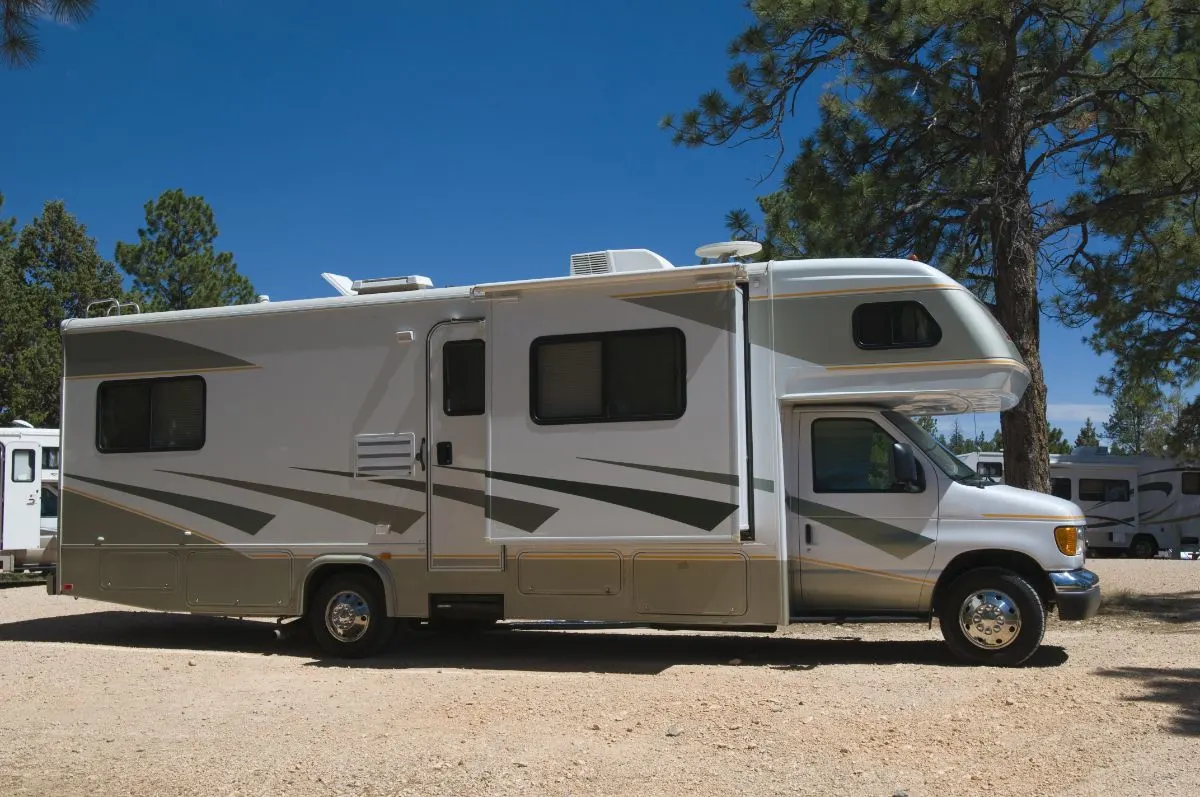
The biggest difference in Class C RVs is really in the style, types of amenities, and size of the RV. With a luxury Class C, you can expect all of the amenities and comforts of home. Current luxury Class C RVs on the market include amenities such as: king size beds, full-size bath tubs, vinyl flooring, hardwood cabinetry, power reclining seats, a stacked washer/dryer, and even a fireplace!
Of course, the more amenities and even customized features that you add to your RV, the more expensive it is going to cost. If you plan on spending a lot of time on the road (and you plan to keep your RV for a long time) it may be worth the investment.
Whether a luxury amenity is functional and useful to you depends on your wants and needs. If you are cooking often, then a larger kitchen with all the appliances and a range stove may be worth it. If you are sharing the RV with other family members or couples (or even extended family), then a split bathroom setup (where the shower and toilet are separated by a door) would be ideal.
This would allow someone to shower without hogging up the entire bathroom. I think you’ll get the most bang for your buck by choosing luxury amenities that maximize the space and livability of your RV.
The more people the amenity serves, the more willing I’d be to spend money on it. Finer finishes like vinyl flooring and hardwood cabinetry are more of a preferential matter in my opinion, but if you like all the bells and whistles, then don’t let me hold you back!
2. Super C RVs
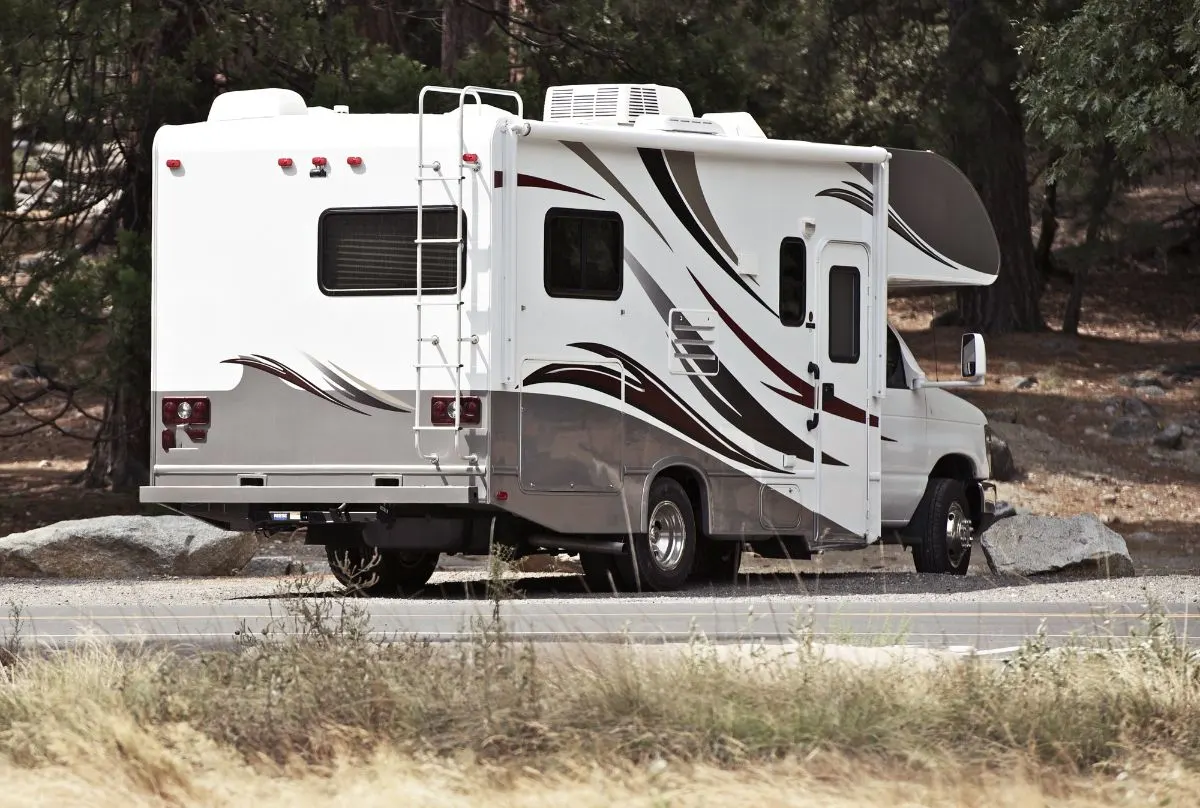
Now, while we’re talking about luxury Class C RVs, I have to mention Super C’s! Have you heard of this before? A Super C is basically the most over-the-top, high-end, luxurious Class C you could imagine. The 1% of Class C’s, if you will. It’s for those of you who prefer to travel like a rock star.
Most Super C motorhomes are diesel powered and are sometimes built on a Ford, Chevy, or even heavy-duty Freightliner truck chassis. This allows it to pull a heavier load and maximize fuel efficiency.
One Super C, for example, branded its floorplan “The Mansion.” Super C’s are built to last. They offer maximum space and the most cutting edge technology available. This would include things like power recline theater seating, a satellite dish, an electric patio awning with LED lights, and backup and side-view cameras.
I realize wi-fi is all the rage these days, and satellites for some people are becoming a thing of the past, but a satellite on an RV would assure you’d be able to access all your favorite TV channels and streaming services, no matter how bad your cell phone service was. If you and your family love movie nights, then the satellite dish and power recline theater seating would be a perfect fit.
Super C RVs usually offer a variety of floorplans, even within different brands, so you should be able to find exactly what you’re looking for.
Slide outs are a must
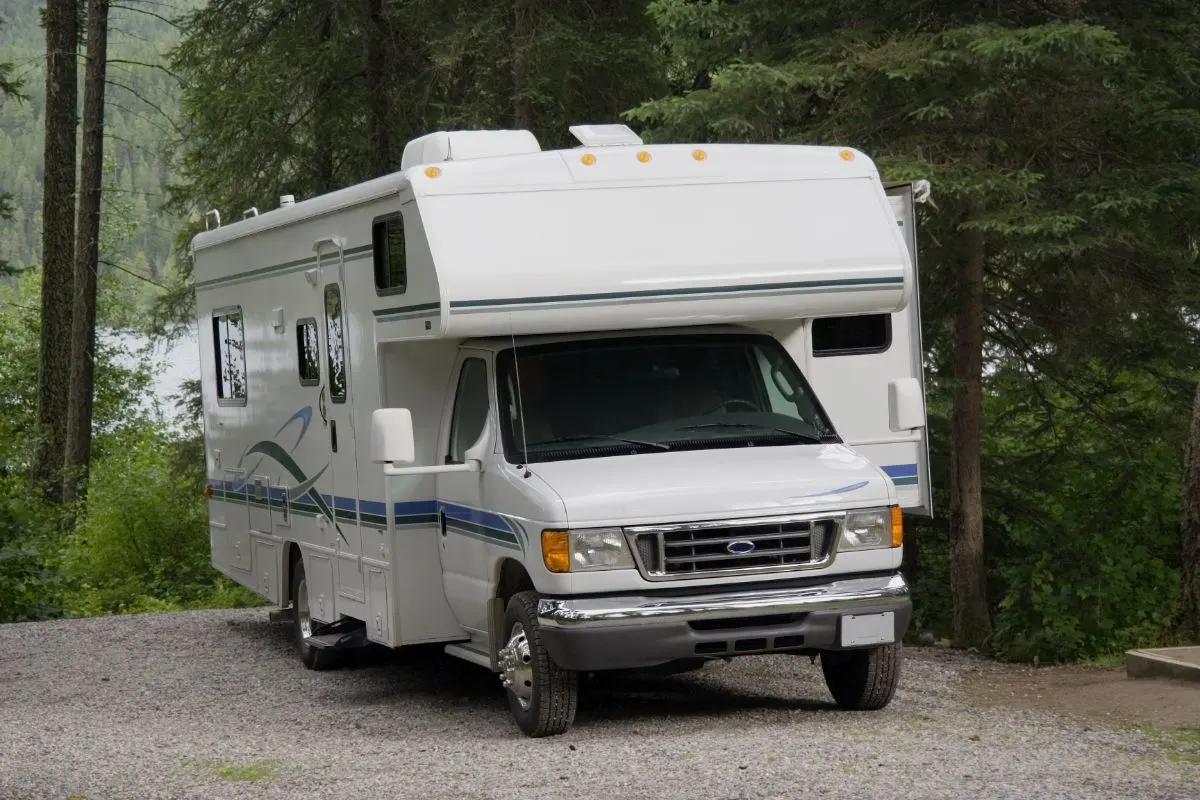
Another type of Class C RV is one that includes slide outs. This is when part of the RV, usually one of the middle sections or the rear, slides out to provide additional living space. Obviously, this is only done when the RV is safely parked, but in my opinion, this feature is a must!
Depending on the layout you choose, a Class C RV can come with anywhere from one to six slide outs. There are two different types of slides, hydraulic and electric. Lighter slides are usually electrically maneuvered, and have fewer complications than hydraulic ones.
If an RV has more than one large slide, it will require multiple motors to control the different hydraulic systems associated with each slide. Hydraulic slides hold the heaviest loads, but they are more complicated to fix.
If you’re not sure whether a slide out RV is for you, I recommend going in person to see for yourself how they compare. I remember when our family went on our Western U.S. adventure, it was really fun to park the RV at night, get into our pajamas, and activate the two slides the RV had. It felt like a whole different RV compared to what we’d been in on the road all day.
A Brief History of RVs
The first motorhome was invented in 1923, built on the chassis of a Ford Model TT. Just four years later, Mr. Leonard S. Whittier built a custom RV on the chassis of a Brockway model H bus chassis. These “house cars” were novel and exciting, as travelers continued to discover new brilliant ways to bring their life and the comforts of home on the road with them.
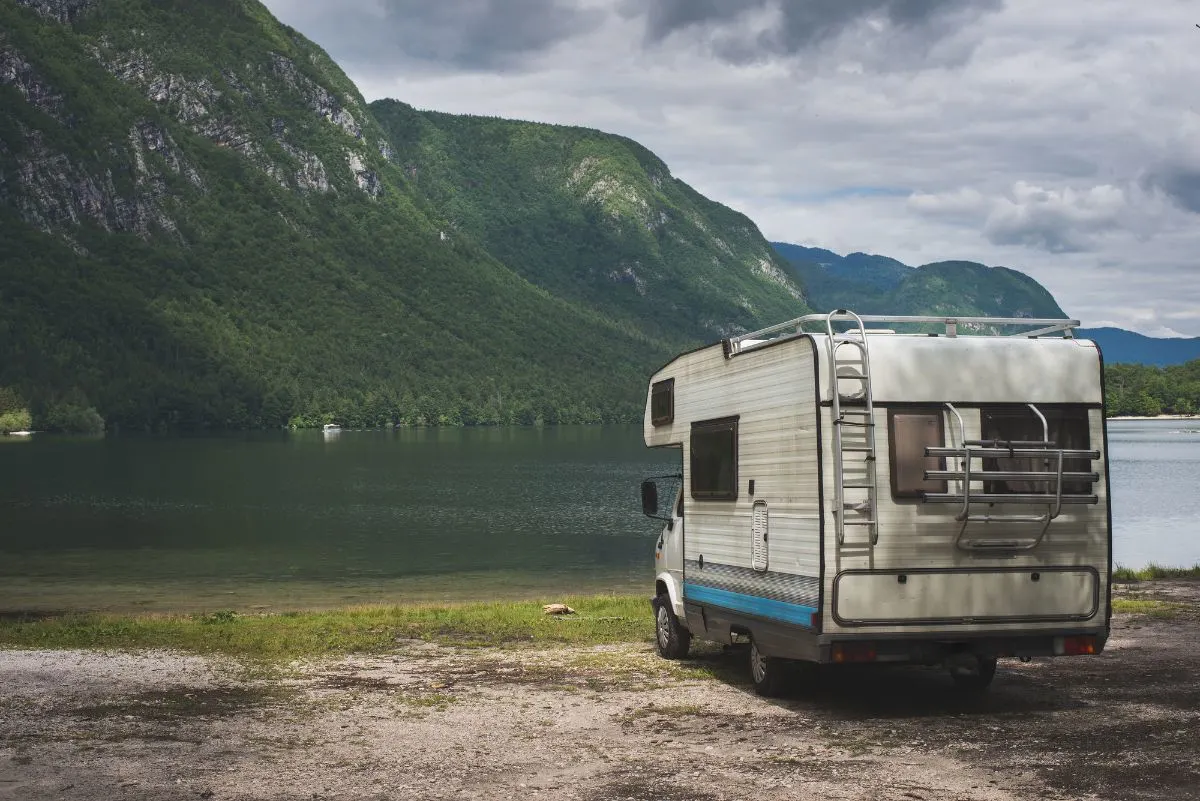
RV growth halted during the 1930s and 1940s because of World War II, but after the war was over, production ramped up and manufacturers jumped right into the future of RV living. In 1955, the first two-story RV was built, measuring 65’ long and weighing 18 tons. It featured two bathrooms, a portable pool and driving board, and a 21’ TV.
In 1958, one of the most iconic RV brands was born: Winnebago. The first model was built in 1966 and retailed at half the price of other competitors, allowing the brand to quickly become synonymous with motorhomes, similarly to the way “iPhone” and “cell phone” are.
My dad actually grew up traveling in a Winnebago with his mom and two siblings in the 1970s. My grandmother was a widow, and she took her three kids back and forth from California to Utah to visit family and friends. This is likely why my dad was so anxious to recreate that nostalgia with his kids on our Western U.S. adventure!
From the 1970s and on, RVs have become more luxurious, maneuverable, affordable, and functional in all ways. It’s incredible to see how far the industry has come since the 1920s, isn’t it?
FAQ Section
What is the best Class C brand?
As you’re perusing online, you may become overwhelmed by how many brands there are. It’s nothing to be intimidated about, especially when you consider that the RV industry in the U.S. is estimated to be $114 billion! Some of the most popular brands include Forest River, Coachmen, Winnebago, and Jayco.
Used or new, is there a difference?
If you are new to the RV lifestyle, you may want to consider purchasing a used RV first. This will not only cost you less, but it will allow you to get comfortable with something that is close to what you think you would want in a newer RV that you’d purchase later. It could serve as a practice vehicle, or a starter home, if you will.
Once you become accustomed to RV life, and all the maintenance and learning that comes with it, then you will know better what you like and don’t like, and what you are looking for when and if you do decide to purchase a new RV.
Unless you grew up with one, or have significant knowledge of RVs and have experience with them, I wouldn’t recommend buying a brand new RV right out the bat. Who knows, you may not even like RV travel as much as you think you would!
Do I need a special driver’s license to drive a Class C RV?
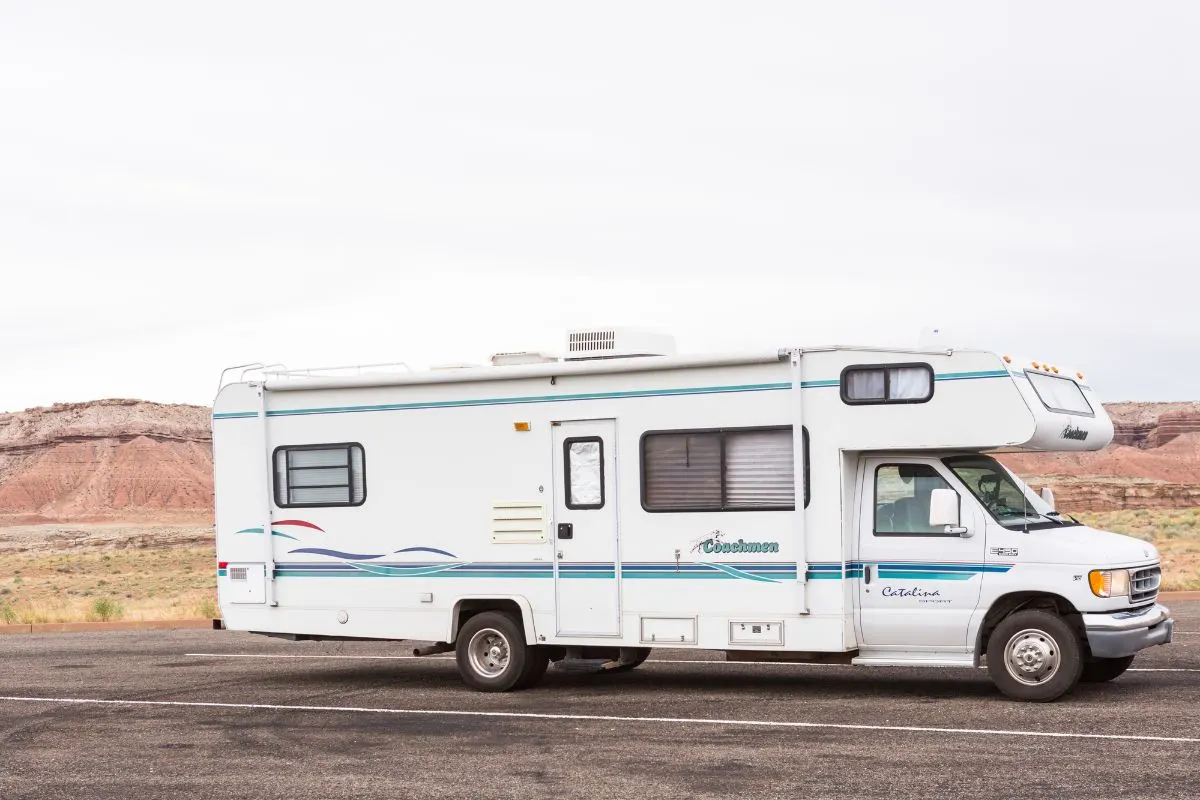
You’re in luck! RVs under 26,000 pounds do not need an additional license to legally operate them. Do keep in mind that some states in the U.S. require a special license to operate a Class A or Class C motorhome; it just depends on the motorhome’s GVWR (gross vehicle weight rating) or length.
California, for example, requires a non-commercial class B license for motorhomes that are more than 40 feet.
Can I tow a car or a boat with a Class C RV?
Yes. It will depend on your RV’s towing capability, but most Class C RVs are capable of towing a mid-size car. It will affect your gas mileage and speed, but if you’re a true RV-er, you’ve got nothing but time to get where you’re going.
Is GVWR the same thing as towing capacity?
No, they are different. As I mentioned above, the GVWR tells you how much your vehicle weighs in total. The GVWR is how much your RV or vehicle weighs without anything behind it attached. The towing capacity tells you how much more weight you can pull behind you.
To calculate your towing capacity, always consult the vehicle manufacturer. This is one thing you do not want to eyeball or guesstimate. To determine maximum towing capacity, compare the vehicle manufacturer’s weight ratings with the gross weight of your trailer (or whatever it is you’re planning to tow).
The trailer towing capacity should be listed in the owner’s manual, on the driver-side door jamb, or on the manufacturer’s website.
What are the different types of RVs?
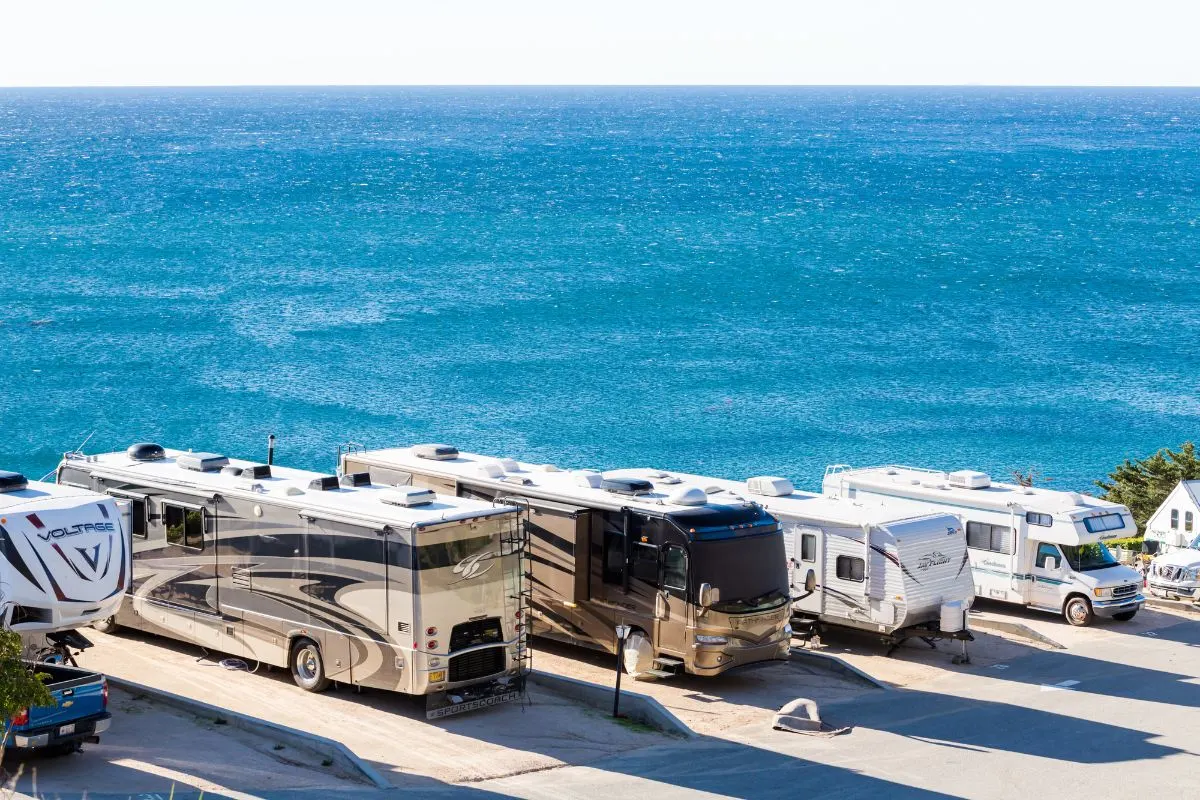
In the world of RVs and motorhomes, there are three categories: Class A, Class B, and Class C. Class A RVs are the largest and most luxurious kind available, ranging from 29-45 feet. Class B RVs are 18-24 feet and are an excellent mid-size option for 1 to 2 travelers.
And finally, Class C RVs, which we’ll be diving into today, are similar to Class A. It’s a little confusing because you’d think Class B’s are larger than Class C’s, but they’re actually not. Class C’s are usually 24-32 feet and can sleep up to 11 people, believe it or not.
What are the most popular RV spots?
Whether you are traveling for a week or a year, there are many popular spots all over the United States and Canada that RVers love to explore. Some people retire and live the RV life full-time, driving all over with specific lists in mind.
For example, one couple may want to visit all the baseball parks in America, while another may want to see every national park in the U.S. and Canada. Really, it depends on the traveler. Don’t let me tell you where to travel––decide what’s most exciting for you!
